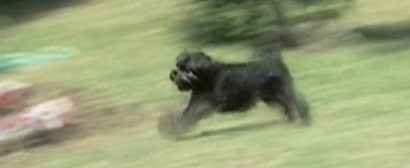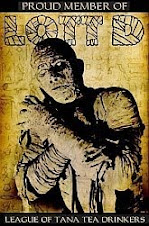Monday, December 28, 2020
When It's All There, Right In the Title...
Monday, December 21, 2020
Black Mirror Revisit: Hated In the Nation
Monday, December 14, 2020
Hello Mary Lou! It's...Urban Legends 3
As we begin the welcome process of closing down 2020, it's nice to think back to the handful of good things this year of horrors has brought us. Among them...um...my antibodies?
Monday, December 7, 2020
Fatal Amanda
Ah, the sweet, sweet sounds of a steamy saxophone solo scoring a hot tub love scene.
Must be the ‘90s—
er, probably made in the ‘90s!
Quick Plot: Poor Amanda grew up hard: after years of abuse at the hands of her stepfather, she took matters into her own fully armed tween hands. She was sentenced to a juvenile mental asylum where, upon growing into a beautiful young legal woman, Amanda became the new target of a sleazy but well-respected doctor. Released into his custody, she quickly seizes control of her life the only way a traumatized woman can: sodomizing him to death with a curling iron.
A girl's gotta do...
After burying her doctor/abuser in his newly rented backyard, Amanda discovers that her neighbors, Richard and Laurie, have some spyware laced around her own perimeter. Laurie, an aspiring jazz singer, is out on tour, leaving lonely Rolling Stone editor (?!) Richard all alone and very open to Amanda's charms.
I guess Amanda is attracted to Richard? For some reason?
After she skillfully downloads and erases incriminating footage, Amanda proceeds to seduce him because what man isn't aroused by corn-on-the-cob in a hot tub?
Naturally, Richard regrets his lapse in judgement while Amanda's obsession grows. She attempts to take out Laurie via a poisoned beer, successfully stages Richard's hacker pal's suicide, and, in what's obviously her cruelest action, MURDERS THEIR DOG.
Folks, I'll have you know, I now have a contributing account on doesthedogdie.com because this wonderful website somehow didn't have the records on Up Against Amanda.
With the plot beats of Fatal Attraction and the performance energy of Showgirls, Up Against Amanda brings serious campy fun by way of writer/director Michael Rissi. Made in 2000 (despite feeling like an early '90s artifact), it has that try-hard USA Network feel that has since become all too glossy on Lifetime.
We’re talking a LOT of camera zooms, random shots of spooky dolls, and of course, some very sweaty saxophone cues. In other words, this movie is everything I want in the world, missing only a shopping montage and dance break.
High Points
This kind of Lifetime-adjacent thriller lives and dies on the enthusiasm of its villain, and full credit goes to Justine Priestley for giving Amanda everything she's got
Low Points
It's unpleasant enough to have a harsh reminder of child rape in what's otherwise such a goofy movie, but to replay Amanda's childhood flashback two times right before the credits feels both mean and, well, lazy?
It's rare that I make a point of calling out font, but I really must say, the water squiggle effect used in the opening and closing credits genuinely made me feel seasick
Lessons Learned
Back in 2000, jazz singers sought fame and glory in the smoky city of...Nashville
It's not the smoke that kills. It's the smoker
The slower the car roll, the longer the death gurgle
Rent/Bury/Buy
Up Against Amanda is trashy fun made even more entertaining by its grand time stamps. Queue it up on Amazon Prime, open up a beer, let it go out of your sight for ten seconds, then spend the next 100 minutes almost taking a sip.


























































